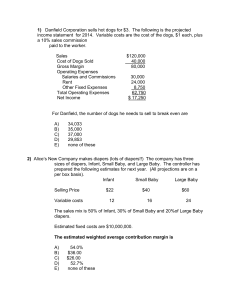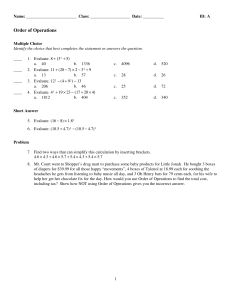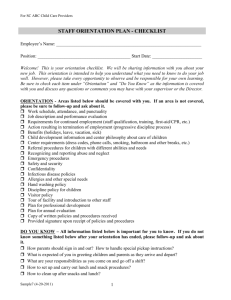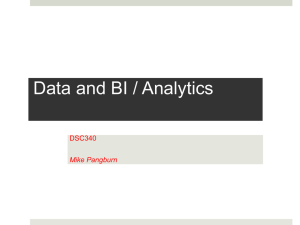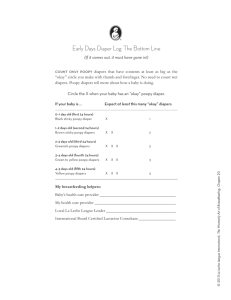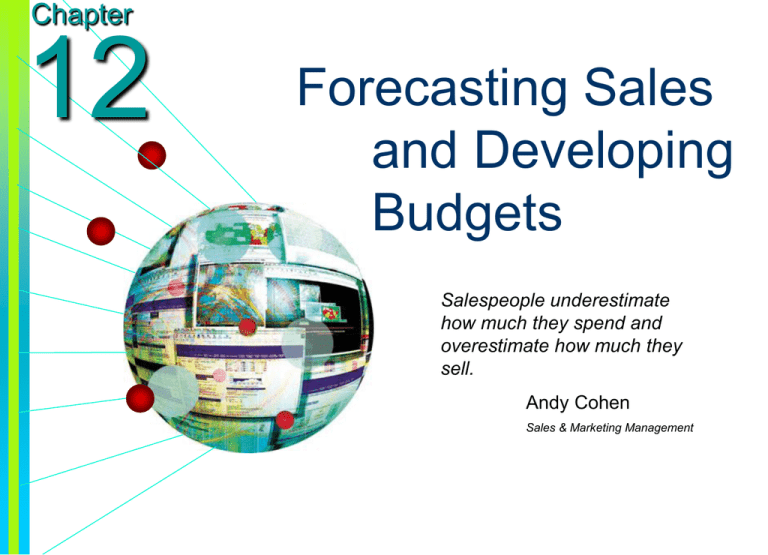
Chapter
12
Forecasting Sales
and Developing
Budgets
Salespeople underestimate
how much they spend and
overestimate how much they
sell.
Andy Cohen
Sales & Marketing Management
Copyright © 2003 by The McGraw-Hill Companies, Inc. All rights reserved.
Sales Forecasting Methods
Methods
Advantages
Disadvantages
Best Used
Executive
Opinion
Quick, easy, and simple
Subjective
Lacks analytical rigor
For new products
Sales force
composite
Relatively simply
Usually fairly accurate
Involves those people who
are responsible for the results
Salespeople are sometimes
overly optimistic
Salespeople may sandbag
(estimate low) to look better
Time consuming
When reps are of a high caliber
When each rep has a small
number of customers
Survey of
buyers
intentions
Done by those who will buy
the product, so accuracy
should be good.
Time consuming
High cost
Customer may not cooperate
For new products
When there are a small number
of customers
Trend
projections:
Objective and inexpensive
Use historical data
No consideration for major
product or market changes
Require some statistical
analysis
For established products
When market factors are
predictable
For aggregate company
forecasts
Analysis of
market
factors
Objective
Fairly accurate and simple
Unforeseen changes in the
market can lead to
inaccuracy
When market factors are stable
and predictable
Test
markets
Very accurate
Time consuming
Cost
For new products which do not
require large investments
-moving average
-exponential
smoothing
-regression
analysis
Copyright © 2003 by The McGraw-Hill Companies, Inc. All rights reserved.
Fig. 12-6 Projection of Sales Trend by Least Squares Method
2010 forecast
x 10-year base
35
30
•
25
20
•
15
10
•
•
•
•
•
•
x 2010 forecast
4-year base
•
•
5
2000
2001
2002
2003
2004
Copyright © 2003 by The McGraw-Hill Companies, Inc. All rights reserved.
2005
2006
2007
2008
2009
2010
Market Factor Forecast: Dryever Diapers
Next Year
Projected population, ages 0-18 months
Percentage using diapers
Number using diapers
Average daily diapers per child
Diapers daily, ages 0-18 months
4,850,000
100
4,850,000
2.55
12,367,500
Second Year
4,800,000
100
4,800,000
2.55
12,240,000
Projected population, ages 19-30 months
Percentage using diapers
Number using diapers
Average daily diapers per child
Diapers daily, ages 19-30 months
3,300,000
80
2,640,000
2.19
5,781,600
3,200,000
80
2,560,000
2.19
5,606,400
Projected population, ages 31-42 months
Percentage using diapers
Number using diapers
Average daily diapers per child
Diapers daily, ages 31-42 months
3,500,000
40
1,400,000
1.10
1,540,000
3,300,000
40
1,320,000
1.10
1,452,000
Total daily diapers, all ages
Percentage disposable diapers
Number disposables daily
Dryever market share percentage
Expected daily sales (units)
Wholesale price per diaper
Annual sales forecast in dollars
19,689,100
95
18,704,645
20
3,740,929
0.07
95,580,736
Copyright © 2003 by The McGraw-Hill Companies, Inc. All rights reserved.
19,298,400
95
18,298,400
20
3,666,696
0.07
93,684,083
Guiding Principles for Forecasting
Fit
the method to the product/market
Use more than one method
Minimize the number of market factors
Recognize the situation limits
Use the minimum/maximum technique
Understand math and statistics
Copyright © 2003 by The McGraw-Hill Companies, Inc. All rights reserved.
Methods for Budgeting
Percentage-of-Sales
Method
Manager multiplies the sales forecast by
various percentages for each category of
expense.
Objective-and-Task Method
Manager determines the task that must be
accomplished in order to achieve specific
objectives, and then estimates the costs of
performing the tasks.
Copyright © 2003 by The McGraw-Hill Companies, Inc. All rights reserved.
Fig 12-8 Flow of Information from
Sales Budget to Other Budgets
Sales budget
Sales department
expense budgets
(advertising, selling costs,
administration)
Production
department budgets
Administrative
expense budgets
Cash budget
Profit-andloss budget
Revenues
Revenues
Expenses
Expenses
Copyright © 2003 by The McGraw-Hill Companies, Inc. All rights reserved.

